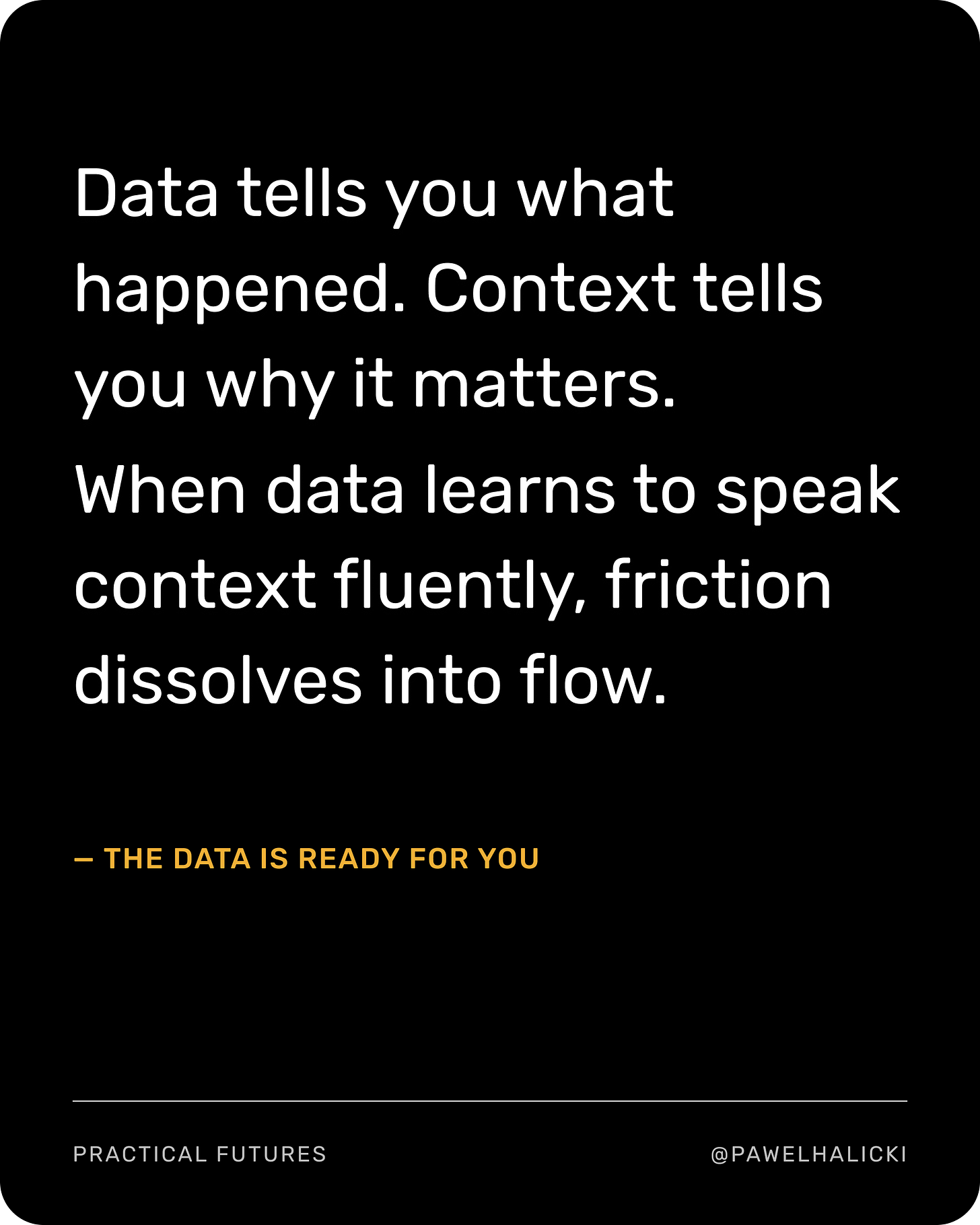Holo patient queues drift gently above the reception desk, rearranging themselves as appointment priorities shift. Soft diagnostic chimes merge seamlessly with the calming pulse of clinic automation.
- Next, please.
The receptionist’s interface quickly scans the pre-authorised profile his assistant has been transmitting since he entered the building.
- Hi, your system verified your identity by gait analysis as you walked in. You've already granted us provisional access to your data. Looks like this is your first visit with us, correct?
- Yes. Oh no. Does it mean a lot of paperwork?
- I doubt it.
Her fingertips glide, guiding data streams expertly, her voice polished by thousands of patient interactions.
- I'll just need you to… never mind. The data is ready for you. Have your assistant run the interview to register, or you can do it yourself in real-time.
He pauses, glancing uncertainly at the interface hovering between them.
- Will I have to do a lot of talking?
- Not really. You can speak, chat normally, or let your assistant handle it at full system speed. It gives us a lot more context than those old forms did. Shouldn't take long either.
He taps his interface, authorising the assistant. A stream of glowing data threads bursts gently from his device, intertwining seamlessly with the clinic’s interface.
- Perfect! See? Looks like they already skipped all the sections irrelevant to your visit.
She glances at her monitoring display with a pleased expression.
- I can even see your stress indicators have dropped since the interview started.
- Is that why the little indicators are dancing on screen?
- Exactly. Your assistant is aligning data priorities with ours. Imagine a tiny diplomatic summit with thousands of micro-negotiations happening faster than we can blink.
A soft medical alert overlays the receptionist's workspace.
- One second, Room 3 is pinging for thermal imaging prep...
She swipes the translucent alert away.
- Never mind, wrong avatar. Sorry about that.
- No problem.
- Where were we? Right, your pre-visit materials. Your assistant recommended interactive visuals and diagrams for your learning preferences. I've sent those to your device.
She continues scanning the data flow.
- Your assistant noticed your comfort presets are still tuned to your previous home. Want me to update them to match your current place?
- Oh, it tracks that too?
- Only what you've authorised. Should I update it?
- Sure, go ahead.
The interface vibrates reassuringly.
- I see your assistant is very focused on your dietary considerations.
- It may have learned from my previous visits. I always had to explain them multiple times.
- That's what good context inheritance looks like.
The data synchronisation continues smoothly.
- Looks like your insurance AI is requesting a quick handshake to pre-negotiate coverage scenarios to avoid surprises later. Should I let it connect?
- Will that slow things down?
- Just a few seconds, but it might save you from follow-up calls later.
- Let's do it.
- All set! Your visit guide should be on your system now. Dr. Ferreira will be ready for you shortly.
He looks at his interface, surprised by the efficiency.
- That was... interesting.
- That's the idea. Have a seat anywhere. All the chairs already know what you find comfortable.
Memories to build from this future:
Think back to the first time your AI assistant handled a complex process while you waited.
What rules did you set for what your AI could decide without asking you?
How did watching two systems negotiate your data change how you think about privacy?
What made you trust or distrust your AI's choices about your personal information?
Try to recall the first quarter you eliminated manual data entry when AI systems started sharing information automatically:
Which bottlenecks disappeared and what new problems appeared?
How did job roles change when repetitive information gathering became automatic?
What new skills did your team need to manage AI-to-AI negotiations?
How did you redesign processes to focus only on high-value human interactions?
Think back to the first year when AI representatives started conducting routine business on behalf of clients:
What controls did you put in place for decisions made at machine speed?
How did you handle mistakes that happened faster than humans could intervene?
Which decisions still require human judgment despite automation?
What audit systems did you create for tracking algorithmic business decisions?
Each memory from the future you build sharpens your strategic instincts for the decisions ahead.
Build enough memories.
Shape better futures.
Know a leader who could use more strategic creativity?
Share Practical Futures with your network.





